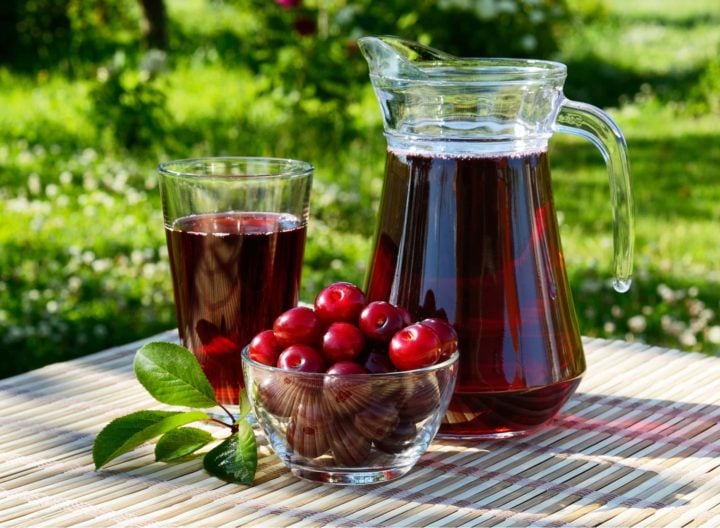
Think of a small fruit, shaped like a small stone and with a vibrant, fiery red, or sometimes plum, color. It looks tiny on the outside, but big and heavy with nutrients inside. Wanna guess what fruit it is? We are talking about the small but incredibly healthy cherry!
For generations, this tiny fruit has delighted the palates of people from all walks of life. It had a place on the dining tables of the mighty conquerors of Rome, aristocrats of ancient China, and citizens of ancient Greece. If only those cherries could talk, they would tell incredible tales of love, conquests, and adventures from all over the world!
Out of more than a hundred cultivars of cherries, there are two types of cherries you may have encountered: the sour and the sweet. The sour or tart cherries have a fleeting presence on the market. Sweet cherries, on the other hand, are available all year round.
The most famous sweet cherry cultivar in the United States is Bing, whereas Montmorency is the most popular tart cherry cultivar. Sour cherries are smaller and harder, and they are somewhat acidic compared to sweet cherries. They're too tart to eat on their own, so they're used in pies, tarts, cakes, cordials, confections, and jams, as well as lightly sweetened poultry sauces. Most sweet cherries are consumed fresh, with the remainder being brined, canned, frozen, dried, or juiced.
Sweet cherries are used to make maraschino cherries, which are commonly used in cocktails and ice cream sundaes. One lucky red fruit can be the "cherry on top."
Because the Montmorency tart cherries ripen only in summer — may be in July or August — they're often processed into cherry juice concentrate, which is an excellent way to get the natural health benefits of this fruit throughout the year.
What also caught the attention of many health experts was the higher concentrations of total phenolic compounds in tart cherries than in sweet cherries. Tart cherries have 20 times the amount of vitamin A, as compared to sweet cherries. They also contain high amounts of melatonin and the omega-3 and omega-6 lipids. On the contrary, sweet cherries contain more anthocyanins than the sour type.
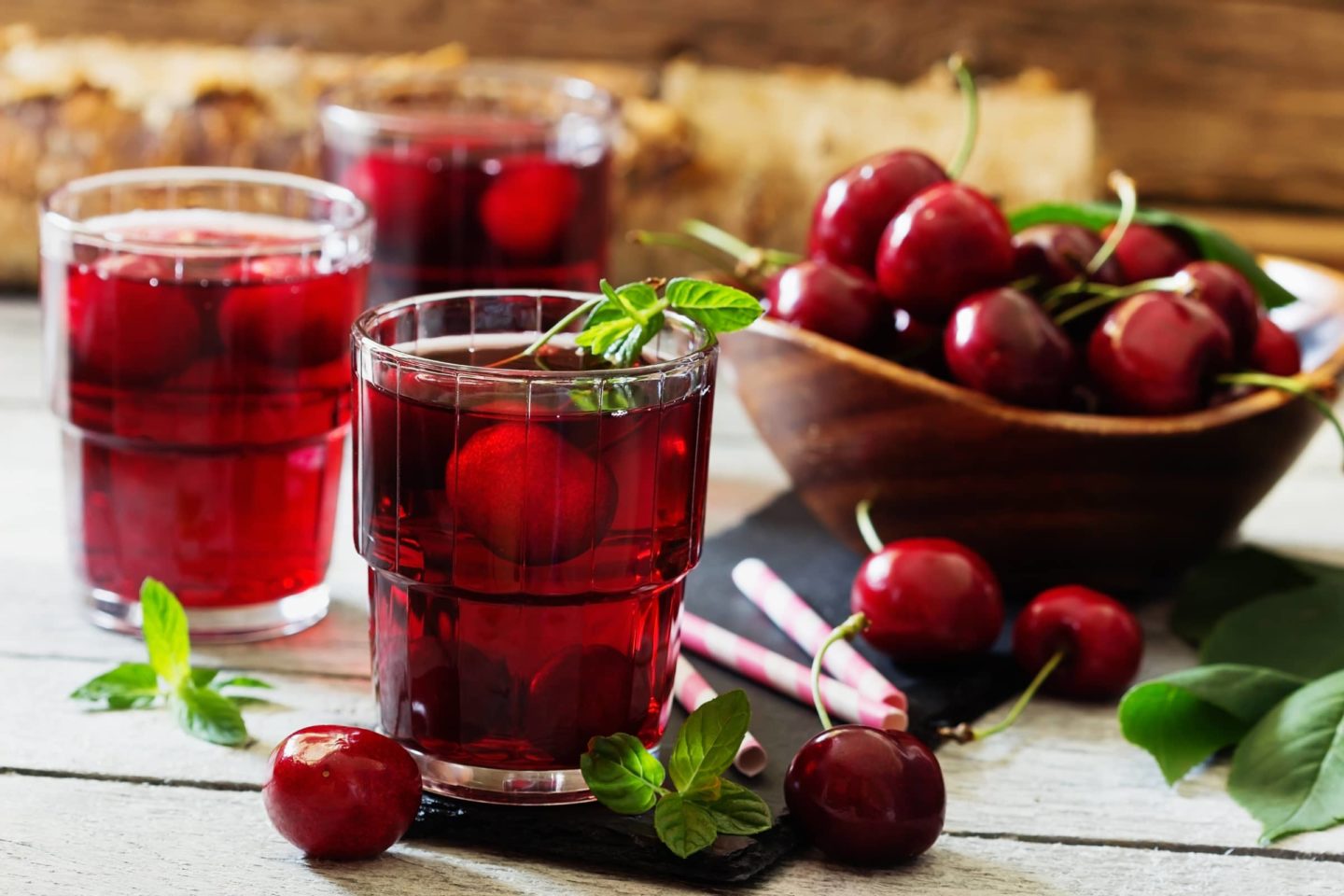
In this article, we will focus on the tart or sour variety. Tart cherry juice, in particular, has recently gained a lot of popularity among health-conscious people. Many studies support these positive effects of tart cherry juice on people's health.
There is some truth in the saying, “the bolder, the better.” This applies to all fruits and vegetables. Those with deep, rich colors like blue, red, and purple are naturally richer in antioxidant properties. The color is derived from a component called anthocyanins, which also provide impressive health benefits.
Compared to other berries, tart cherries have the highest amounts of anthocyanins. Many studies have found that anthocyanins are responsible for the fruit’s antioxidant activity, measured in Oxygen Radical Absorbance Capacity (ORAC). Indeed, the antioxidants in tart cherries can be seen on the outside.
In the section on health benefits, we will learn about the amazing qualities of tart cherry juice and the many wonders of drinking it regularly.
Table of Contents
The Fruit’s Contents
The fruit's main components are water and carbohydrates — it contains no starch. The major carbohydrate in cherries is a form of sugar called glucose. Malic acid is the dominant organic acid, comprising 600 mg to 900 mg per 100 grams of fresh weight.
Tart cherries also have all the essential amino acids. Essential amino acids are the building blocks of cells — without them, your cells will find it hard to replicate and perform their function.
The Montmorency cultivar, in particular, contains a high quantity of melatonin. Melatonin is a hormone that regulates the body’s sleep-wake cycle and helps to provide restful sleep.
Tart cherries are also a good source of vitamins and minerals. They have a notable amount of vitamin A, which plays an important role in improving your eyesight, especially at night.
Minerals are also present in small amounts in the fruit. Among the electrolytes, potassium is present in large quantities in tart cherries. As we will later see, potassium is important for cardiovascular health, blood pressure control, and water balance.
Tart cherries also have high concentrations of bioactive components that account for many of their health benefits. Among the long list, the essential and worth mentioning are phenolic acids and anthocyanins. These components do not work in isolation from each other. They work synergistically with other bioactive ingredients that exert their impressive actions in molecular pathways in the body.
A large body of research supports that the consumption of tart cherry extracts reduced markers for oxidative stress, inflammation, exercise-induced muscle soreness and loss of strength, and blood pressure promptly after ingestion. A small number of published studies also suggest that cherries can help with arthritis, diabetes, blood lipids, sleep, cognitive functioning, and even mood.
All types of processed tart cherry products contain anti-oxidant and anti-inflammatory properties. However, consumers must note that juice concentrate was superior to other tart cherry products per serving.
The Antioxidant Benefits
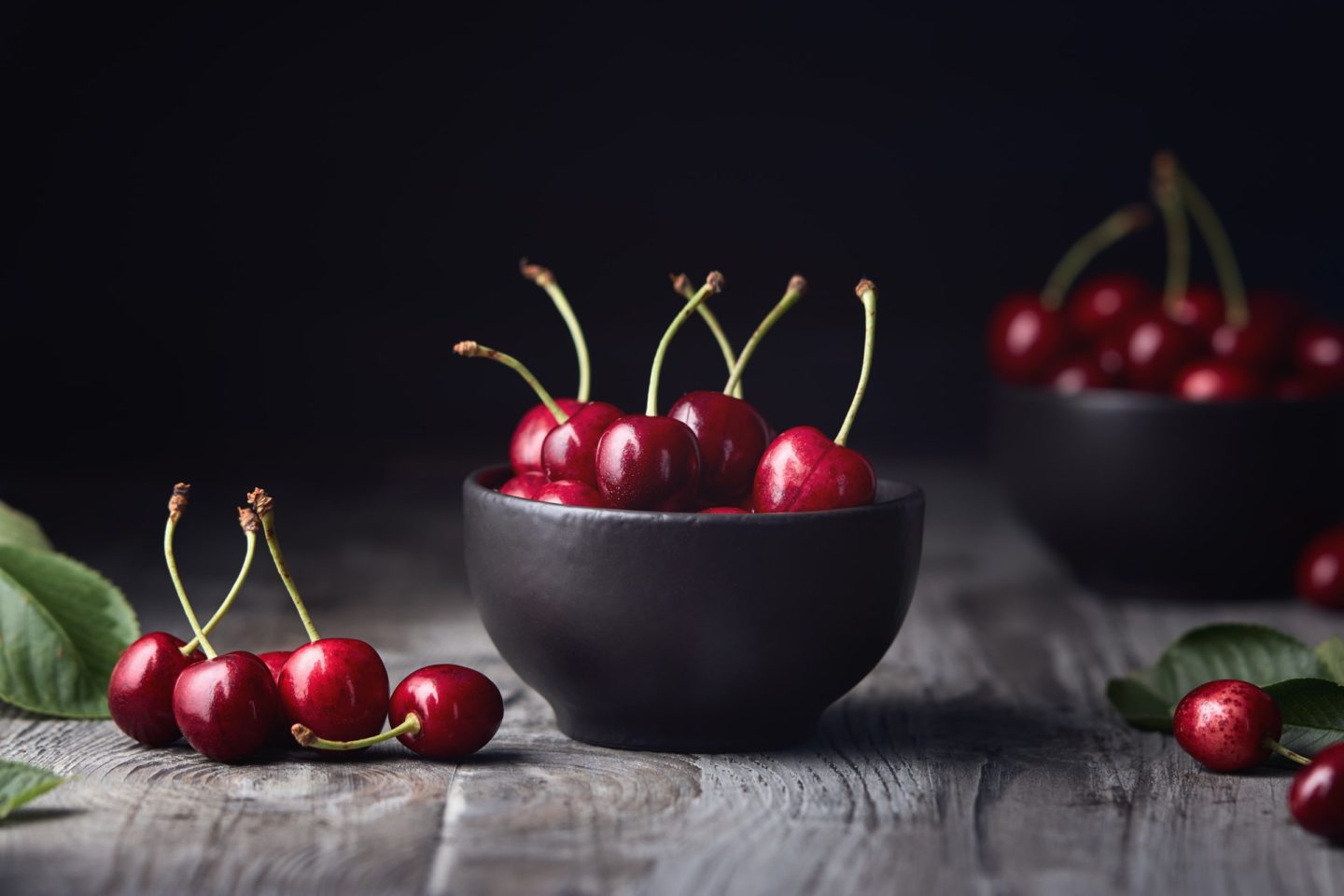
The anthocyanins and other phenolic compounds in tart cherry juice have been shown to produce potent antioxidant and anti-inflammatory actions when consumed by humans.
The naturally occurring antioxidant in the body is glutathione. It is produced in numbers by the liver cells. Studies show that anthocyanins’ scavenging activity is 100 times more potent than that of glutathione. It captures toxins present in the body more effectively than glutathione.
Its effects, too, are both short- and long-term. The short-term effects were observed by a study done by Bell et al, where 30mL and 60mL of tart cherry juice significantly improved the body’s antioxidant status almost immediately after drinking it.
Urate, a byproduct of cell metabolism, can cause joint pains and cell damage when accumulated. There was a decrease in the levels of urate following ingestion of the fruit juice.
A long-term effect was also observed in another study. Participants consumed 480 mL of tart cherry juice. Blood markers of antioxidant activity at baseline and 12 weeks. The results are impressive! Tart cherry juice significantly increased the plasma levels of enzymes that repair damaged DNA in the body.
There is also a significant amount of Vitamin C in tart cherry juice. This same vitamin interacts with biological components that strengthen the antioxidant potential of the body.
The Anti-inflammatory Benefit
The compound responsible for the anti-inflammatory effects of tart cherries is anthocyanins. It mimics the effect of a class of medications called non-steroidal anti-inflammatory drugs (NSAIDs).
The cyclooxygenase pathway (COX) is the step-by-step conversion of the substances “prostaglandins” and “thromboxane”, which are mediators of inflammation. This is also the step that is inhibited by the medication called NSAIDs. Moreover, it was found that anthocyanins in juice concentrate provide a more potent anti-inflammatory effect than NSAIDs and aspirin due to the inhibition of cyclooxygenase (COX) activity.
Combined Oxidation and Inflammation
These two body processes, when put together, can derail the body’s proper functioning.
Reactive oxygen species (ROS) generated by oxidative stress and inflammation cause damage to the blood vessels layer called the endothelium. As such, the body produces more inflammatory mediators, causing thickening of the innermost layer of the blood vessel.
When inflammation is accelerated, there is a narrowing of the blood vessels — termed vasoconstriction. This impairs the function of the blood vessels and produces damage. Too much vasoconstriction increases blood pressure.
Inflammation and oxidative stress also constitute the critical factors in developing cardiovascular disease and atherosclerosis.

Cardiovascular disease (CVD) is the leading cause of death in the United States. It is a significant health threat. Aging intensifies the production of these free radicals that 80% of people who die of CVD are aged 65 or older.
The good news is: there is a chance of prevention offered by intake of tart cherry juice. This is due to polyphenolic compounds, fiber, carotenoids, and certain vitamins and minerals such as vitamin C and potassium.
There is also growing evidence that tart cherries exert protection from damage to the heart. A study demonstrated that tart cherry juice could lower blood pressure. It gives the additional benefit of lowering bad cholesterol.
Health Benefits
Recovery from Exercise-Induced Muscle Damage
Science also tells us that tart cherry juice also provides additional protection for athletes.
Exercise-induced muscle damage, or EIMD, is marked by skeletal muscle function loss due to exercise-related stress.
Two factors induce EIMD. It begins with mechanical stress as a primary event. The oxidative stress given to muscles from this mechanical disruption sets the stage to begin inflammation. This is followed by a secondary response to the stress manifested by muscle inflammation.
The symptoms of EIMD are strength loss, muscle soreness, and swelling. When blood is extracted during this time, there is leakage of proteins in muscles called creatine kinase (CK) and myoglobin to the bloodstream. This phenomenon is common after bouts of unaccustomed exercise consisting mainly of unusual muscle contractions.
The antioxidant and anti-inflammatory activities of anthocyanins and other phenolic compounds present in cherries appear to be linked to their ability to reduce exercise-induced muscle damage.
In a study, tart cherries ingestion was proven to be a consistently effective supplementation strategy to attenuate the symptoms of EIMD. The levels found to be protective are 8–12 ounces twice daily of a tart cherry juice product equivalent to at least 80 mg per day of anthocyanins or 100–120 cherries daily.
Decrease Risk of Metabolic Syndrome
The metabolic syndrome is a collection of five disorders resulting in heart disease, diabetes, stroke, and other health issues. The diagnosis is made when three of the following are present: high blood sugar levels, low HDL or good cholesterol, high triglyceride levels, large waist circumference, and high blood pressure.
The intake of tart cherry juice has been adequately studied in these five conditions. We will break them down individually in the next section.
Blood Pressure
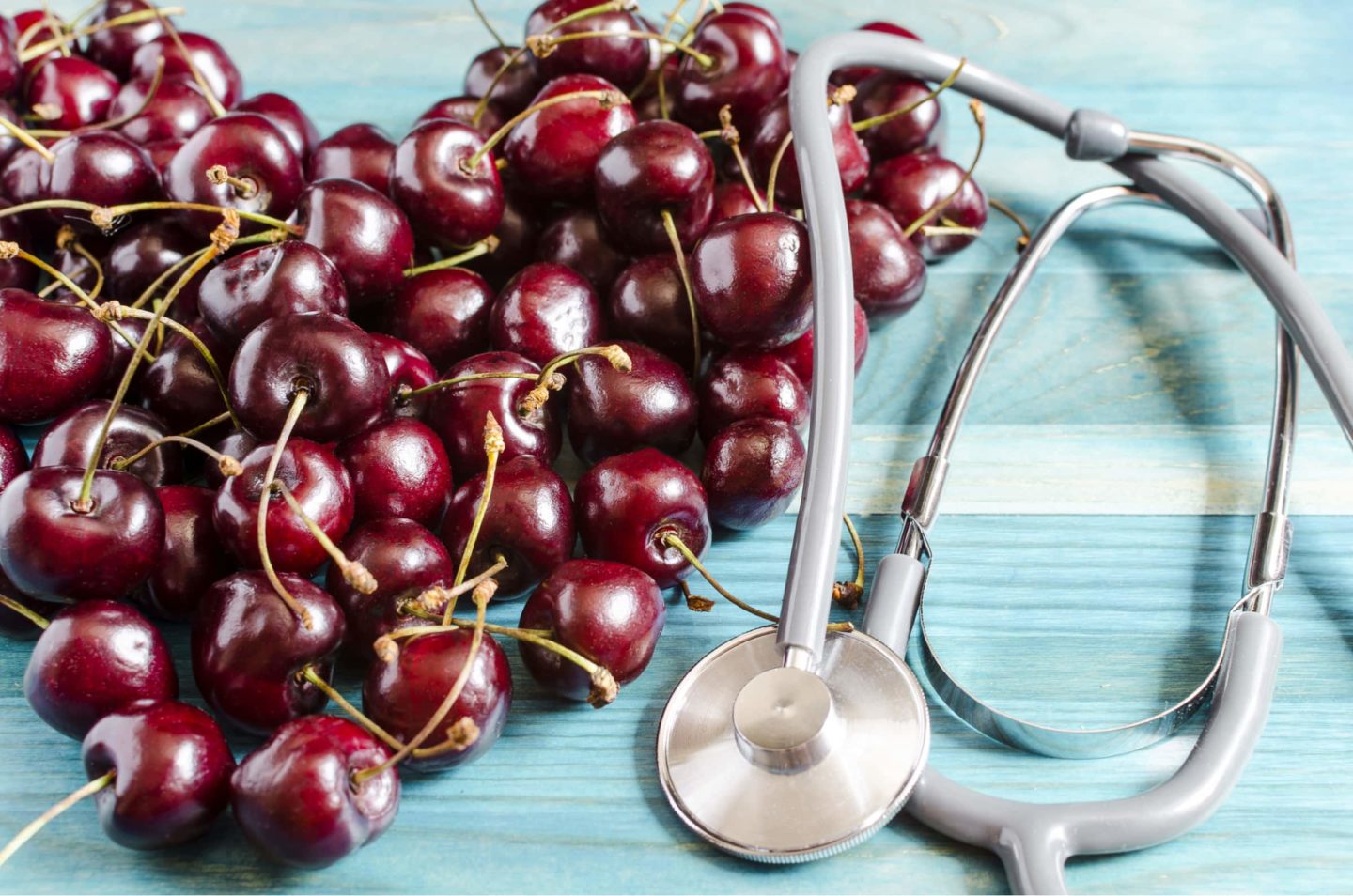
High blood pressure or hypertension is a vascular disease. Like a narrow pipe, the blood vessels need just enough pressure running through them to continue their function. As a person ages, this “pipe” is deposited with plaques of cholesterol and other harmful byproducts from the food we eat and from normal body metabolism. This causes the average pressure within the vessels to slowly increase.
Other people are more prone to hypertension than others. Genetics, environmental factors, and other disease conditions, like diabetes mellitus and kidney disease, are contributors.
At the cellular level, hypertension results from an increase in endothelin-1 and plasminogen activator inhibitors (PAI). These important constrictors of the blood vessels are potent. They are correlated with metabolic syndrome and predict the risk for cardiovascular disease and diabetes.
In a study, a decrease in blood pressure was noticed as the effect of drinking tart cherry juice. This is because of the reduction of endothelin-1. The acute impact of ingesting tart cherry juice reduced both systolic blood pressure and diastolic blood pressure within 2 hours of a single dose of 300 mL of cherry juice.
A long-term study in animals following ingestion of tart cherry juice also led to decreased levels of plasminogen activator inhibitors. The addition of tart cherry extract fed to rabbits reduced plaque formation and improved cardiac functions.
Diabetes Mellitus
Drinking tart cherry juice might also just be your new favorite. Diabetes affects men and women alike. Diabetes is caused by insulin insensitivity. The body cannot use insulin because the tissues of the body are insensitive to this hormone. Insulin is used by glucose to enter into the cellular compartments. As a consequence, blood sugar does not enter the cells.
Over time, diabetes can lead to more dangerous complications affecting the nerves, small vessels, kidneys, and heart.
It is the component anthocyanin and phenols found in the tart cherry that produces the advantage. In the study, we get most of these in concentrated juice. Despite the increase in blood sugar levels after intake, their insulin sensitivity, a risk factor for diabetes, did not increase.
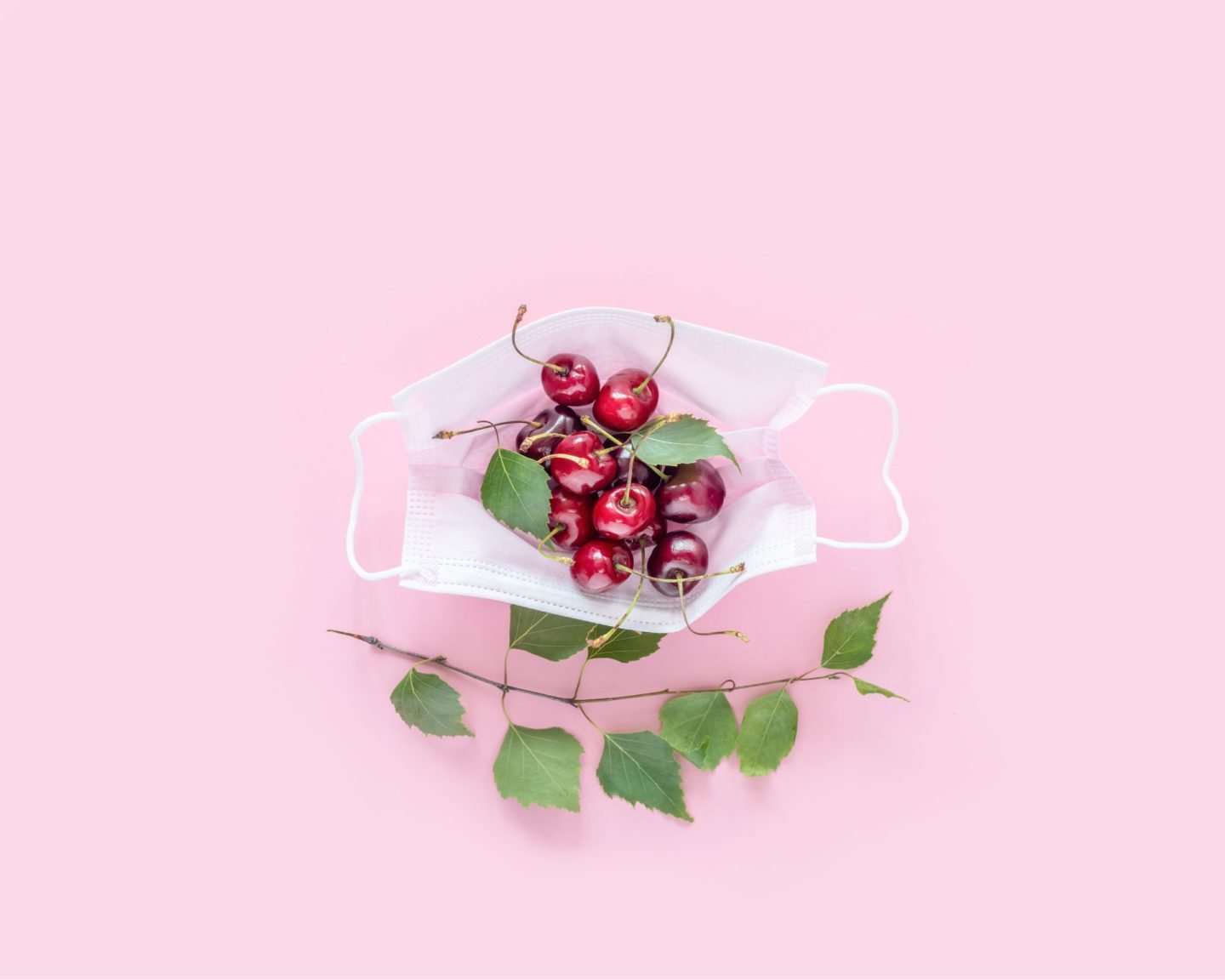
Concentrated tart cherry juice at 40 mL/day, containing anthocyanins at 720 mg/day for six weeks, significantly decreased hemoglobin A1C (HbA1C) compared with the levels before the supplementation. HbA1C is the measure of sugar levels in the blood in the past three months.
These are results from human, animal, and cell culture studies. Specifically, anthocyanins may decrease blood glucose by slowing sugar production from complex carbohydrates from food. It also increases the entrance of glucose into the liver cells for storage and increases the availability of insulin by pancreatic β cells. Together, cherry drink consumption may promote healthy glucose regulation.
In persons with diabetes, tart cherry juice is low in glycemic index.
Studies have shown the protective effect to be achieved with the intake of 30mL of juice concentrate mixed with 100mL of water or ten capsules of tart cherry capsules daily.
Blood Lipids
In another study with overweight and obese subjects who had elevated blood lipids, there was a decrease in total triglycerides and “bad” cholesterol levels after consuming tart cherry juice for four weeks.
In animal studies, cherry extracts and anthocyanins can decrease liver triglycerides and cholesterol. These deposits of fat give rise to a liver condition called Non-Alcoholic Fatty Liver Disease, or NAFLD. NAFLD can cause irreversible damage.
Improved Sleep
Melatonin is a hormone produced by the body. It controls the night and day cycles, often known as sleep-wake cycles. Melatonin supplements are normally created in a laboratory. But do we need melatonin supplements when we have tart cherry juice?
The body produces a lot of melatonin in response to darkness, which signals the body to sleep. Melatonin production is suppressed by light, signaling the body to wake up. The sleep-wake cycle is often interrupted as we age. Seeing a patient whose primary complaint is difficulty sleeping at night is not an uncommon scenario.
Tart cherries are abundant in melatonin. Sour cherries are high in tryptophan and anthocyanins, two substances that may aid in melatonin production and extend its effects. Phenolic compounds also play a role in sleep regulation, thanks to their anti-inflammatory and antioxidant properties.
Tart cherries have been demonstrated to improve sleep quality and lessen insomnia symptoms due to these qualities. This could also be explained by the increase in circulating melatonin levels after consuming sour cherry juice daily. Tart cherry juice consumption reduced napping during the day and increased sleep quality in healthy people with no documented sleep problems throughout the night.
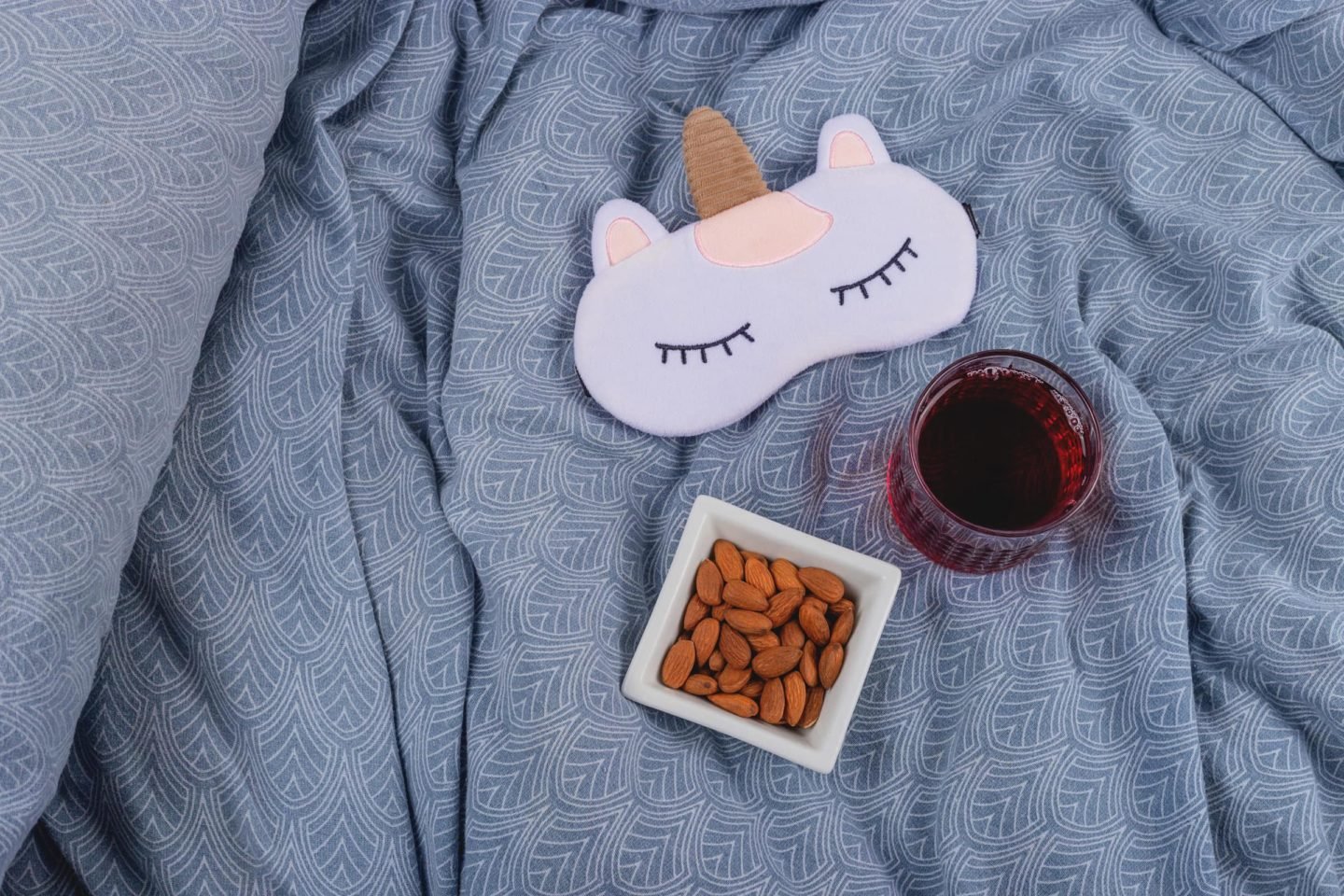
This effect on sleep was observed in both sweet and sour cherries within three days of consuming sweet cherries at 141 g or 25 cherries/day and within five days of consuming tart cherries (240 mL of tart cherry juice or 100 cherries/day). Consumption improved both the quality and quantity of sleep.
In animal models, anthocyanins also improved memory. An additional benefit is the prevention of amyloid-beta deposits, which induce Alzheimer’s disease. These results are suggestive of enhanced cognitive function in humans consuming cherries.
The recommended dose for intake of tart cherry juice is 1–8 ounces up to twice daily for seven days.
Improves Arthritis Symptoms
Gout is a form of arthritis that causes severe discomfort. When your body has too much uric acid, sharp crystals can form in the big toe or other joints. During acute gout attacks, there are episodes of swelling and discomfort.
One of the most well-studied benefits of tart cherry juice is the prevention of these attacks of arthritis. As a measure of gout attacks, the levels of uric acid were measured. Surprisingly, the intake of tart cherry juice restored the plasma uric acid (UA) concentrations to normal levels.
The first study on the health advantages of fresh and canned cherries in gout patients dates back to the 1950s. The consumption of fresh cherries or cherry extract was associated with a 35% lower risk of gout attacks as compared to those who had no intake of cherries.
It is also anthocyanins that contribute to this protection. In animal studies, the activity of anthocyanins inhibits xanthine oxidase, the enzyme involved in the uric acid synthesis. Despite variations in the outcomes of much human research, the findings support the conclusion that cherry consumption may reduce the risk of arthritic episodes. More studies in humans need to be performed.
In gout, a study shows that participants who drank 8 ounces of 100 percent tart cherry juice every day for four weeks saw a significant reduction in serum uric acid levels.
Osteoarthritis (OA), on the other hand, is the most common type of arthritis affecting people. This is due to the lack of lubrication in the joints because of aging. The friction created from the running ends of bones creates inflammation in the joints. The antioxidants in sour cherry juice have been shown in studies to help with osteoarthritis pain and inflammation.
Patients with OA who drank cherry juice twice a day for 21 days reported less discomfort. They also had reduced inflammation, as evidenced by an improvement in blood markers of inflammation.
Good Vision
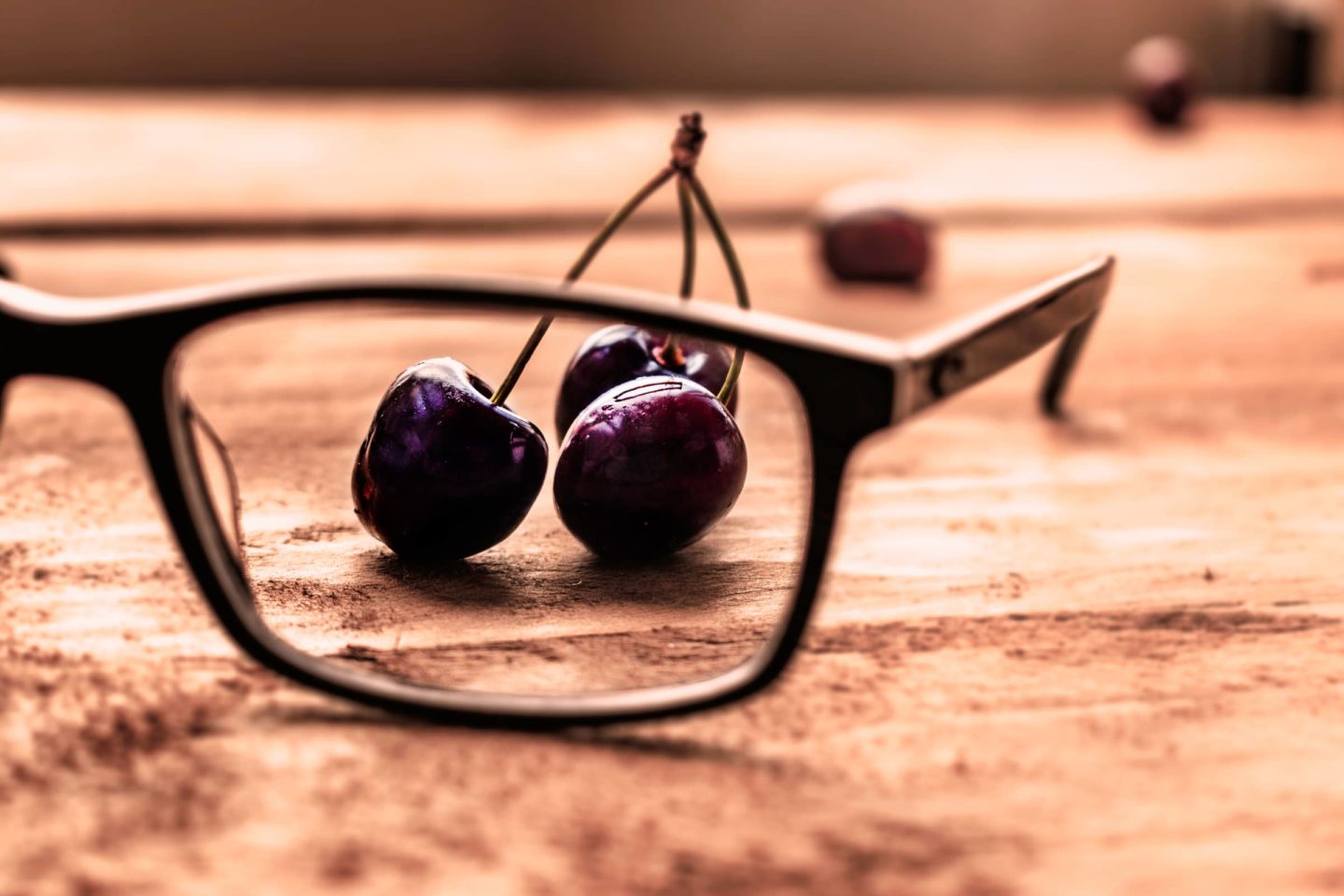
Eye health is not spared from the benefits of drinking tart cherry juice. Tart cherry anthocyanins increase blood flow in the eye, slowing the progression of the condition called glaucoma. Glaucoma is characterized by an increase in eye pressure, which results in progressive vision loss.
Melatonin, found in tart cherry juice, also protects the eyes against glaucoma and age-related degeneration of the macula — the functional center of one’s vision.
In tart cherries, the amount of Vitamin C also helps diminish macular degeneration. Adequate vitamin A is also necessary to prevent night blindness, cataracts, and dry eyes. All of which are vitamins found in tart cherry juice.
In studies, the recommended dosage for maintenance of eye health is 80 mg anthocyanins, the equivalent of approximately 100–120 cherries, 16–24 ounces tart cherry juice blend, 1 ounce of liquid concentrate, or 400 mg of concentrate in tablets or capsules.
Different Forms of Tart Cherry Extracts and Juices
Cherry juice comes in a wide range of flavors. Look for juices that are made entirely of cherry juice and have no added sugar. Sugar and preservatives are commonly added to "cocktails."
You'll also come across some labels that describe tart cherry juice as either "from concentrate" and "not from concentrate" — with the latter believed to be more nutritionally equivalent. "Not from concentrate" means that the juice was poured immediately into the bottle. "From concentrate" implies the juice was squeezed and then filtered to remove the water. After that, it's rehydrated and packaged.
The tart cherry supplement is also available in pill and powder forms. The pill form of cherry supplements has no added sugar and is naturally low in sugar (< 1g).
Effects of Too Much Juice
Most of the trials that we have mentioned safely administered two 8-ounce (240-ml) doses of the juice twice a day for their purported benefits.
This is thought to be the equivalent of eating 200 tart cherries every day. So if you are not a fan of consuming such amounts of cherries per day, fruit juice is your way to go.
Tart cherry juice powder, on the other hand, was commonly utilized at a dose of 480 mg per day in studies using powdered supplements.
Researchers also noted the effects after 7–10 days of supplementation.
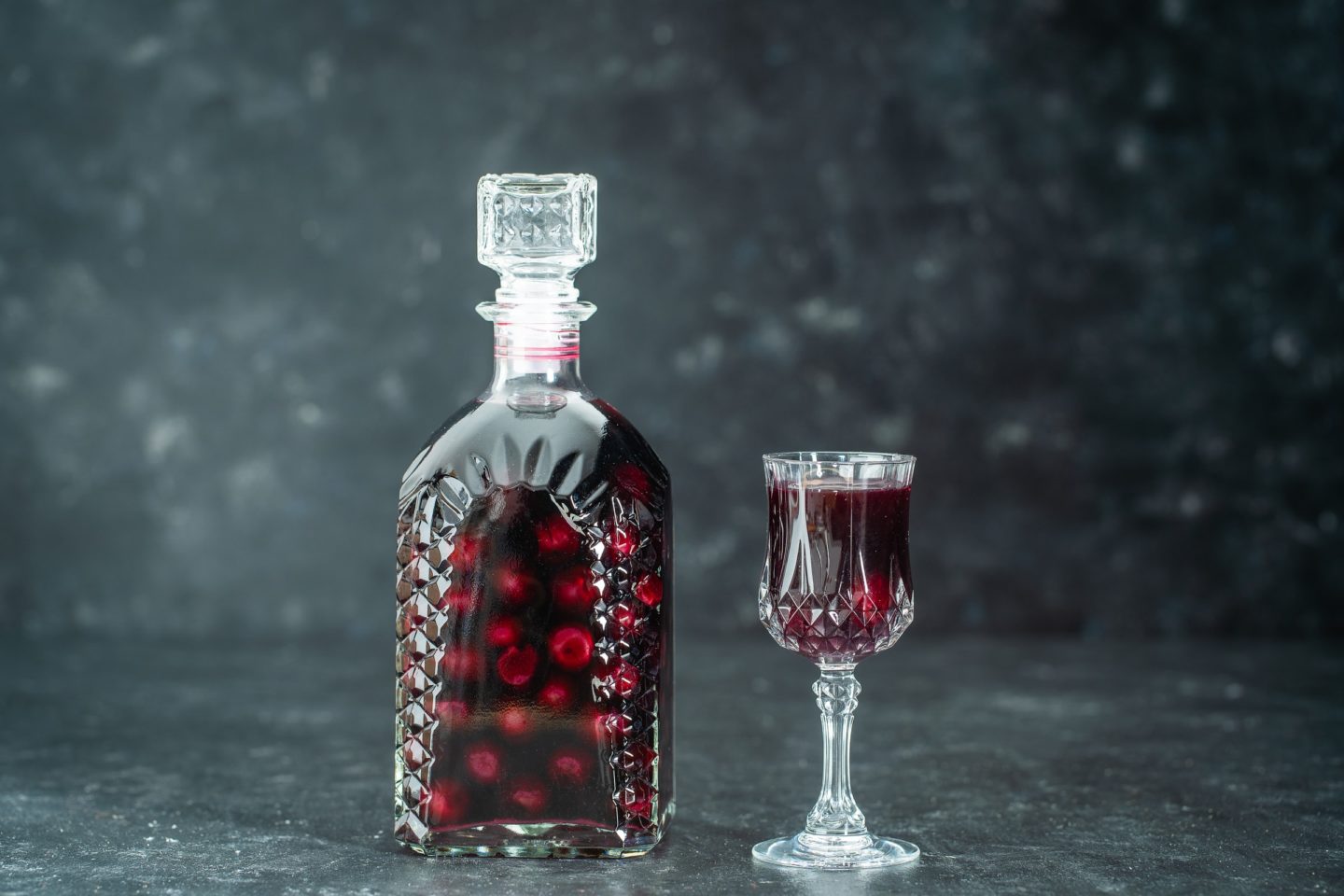
Drinking tart cherry juice is generally safe. However, drinking too much may affect the gastrointestinal system. This may include abdominal discomfort and diarrhea from the juice’s sorbitol content. Sorbitol has a strong laxative effect as it pulls water into the colonic tract causing osmotic diarrhea.
According to the USDA, a one-cup serving of tart cherry juice contains 159 calories and 33 grams of sugar. Tart cherry juice contains calories mainly in carbohydrates; thus, excess consumption may lead to weight gain. Your best choice is to look for unsweetened and additive-free cherry juice made from sour, Montmorency cherries.
This is also the caution given to persons with diabetes, as this may cause sudden spikes in blood sugar levels.
Persons with kidney problems also need to drink tart cherry juice in moderation. Excess potassium intake can give an unusual potassium load to the kidneys, which are difficult to excrete. This accumulated potassium is dangerous for the heart because it can cause irregular heartbeat patterns.
Tart Cherry Concentrate
This tart cherry preparation may be mixed with filtered or sparkling water to make a delightful and savory drink. You can also use this in cocktails.
There are three types of fruit concentrates that you can choose from:
100% Fruit Concentrate
This is the healthiest option because it's nutrient-dense and does not contain any added sugar. It may, however, contain color and preservation additives.
Concentrated Fruit Cocktails, Punches, and Beverages
Sweeteners and flavorings are used to compensate for the lack of the entire fruit in these concentrates.
Powdered Juice Concentrate
This concentrate is made by spraying, freeze-drying, and dehydrating the natural fruit. These take up less space and last longer in storage.
Recipes Made for You
Ordinary people like you and me can enjoy the magic of tart cherry juice. Here are some recipes that we can enjoy. These are no-sweat in preparation but not lacking in health contribution.
Homemade Tart Cherry Juice
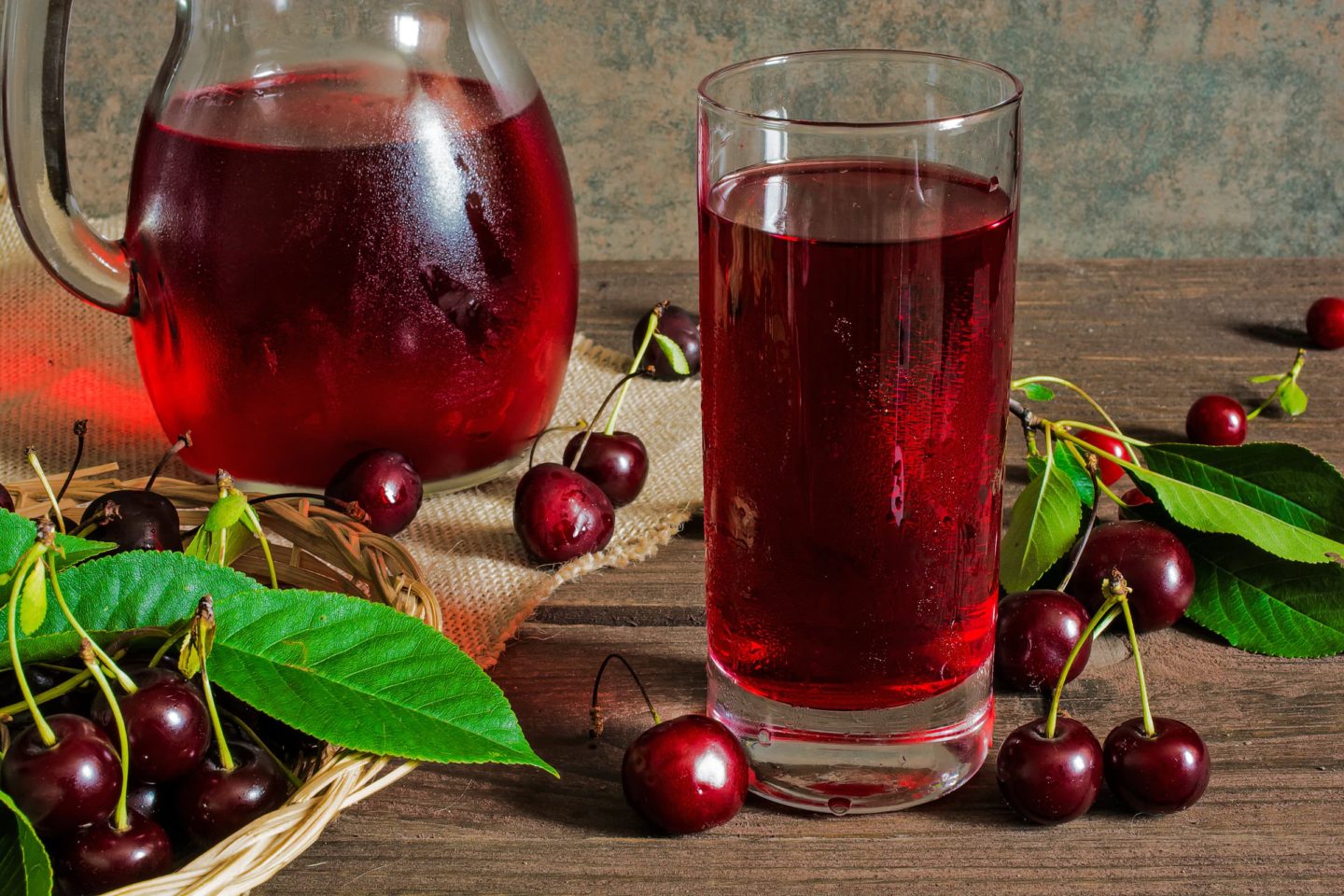
Here's a healthy juice you can easily make at home. You won't even need a juicer! You will need the following:
- 4 lb tart cherries
- 8 cups water
- 2 lb sugar
- Remove the stems and pits from the tart cherries after washing and cleaning them.
- In a large pot, add the water and cherries and bring to a boil. Cook for 20 minutes on low heat.
- Press the fruit to release extra juice through a fine-mesh strainer.
- Place the sugar in the pot with the drained liquid. Cook for another 10 minutes, or until the sugar (or sweetener) has dissolved.
- Fill hot bottles with the mixture and seal them. Boil for 10 minutes in a canning pot with a rack on the bottom.
Source: cookinglsl.com
Tart Cherry Superfood Shots
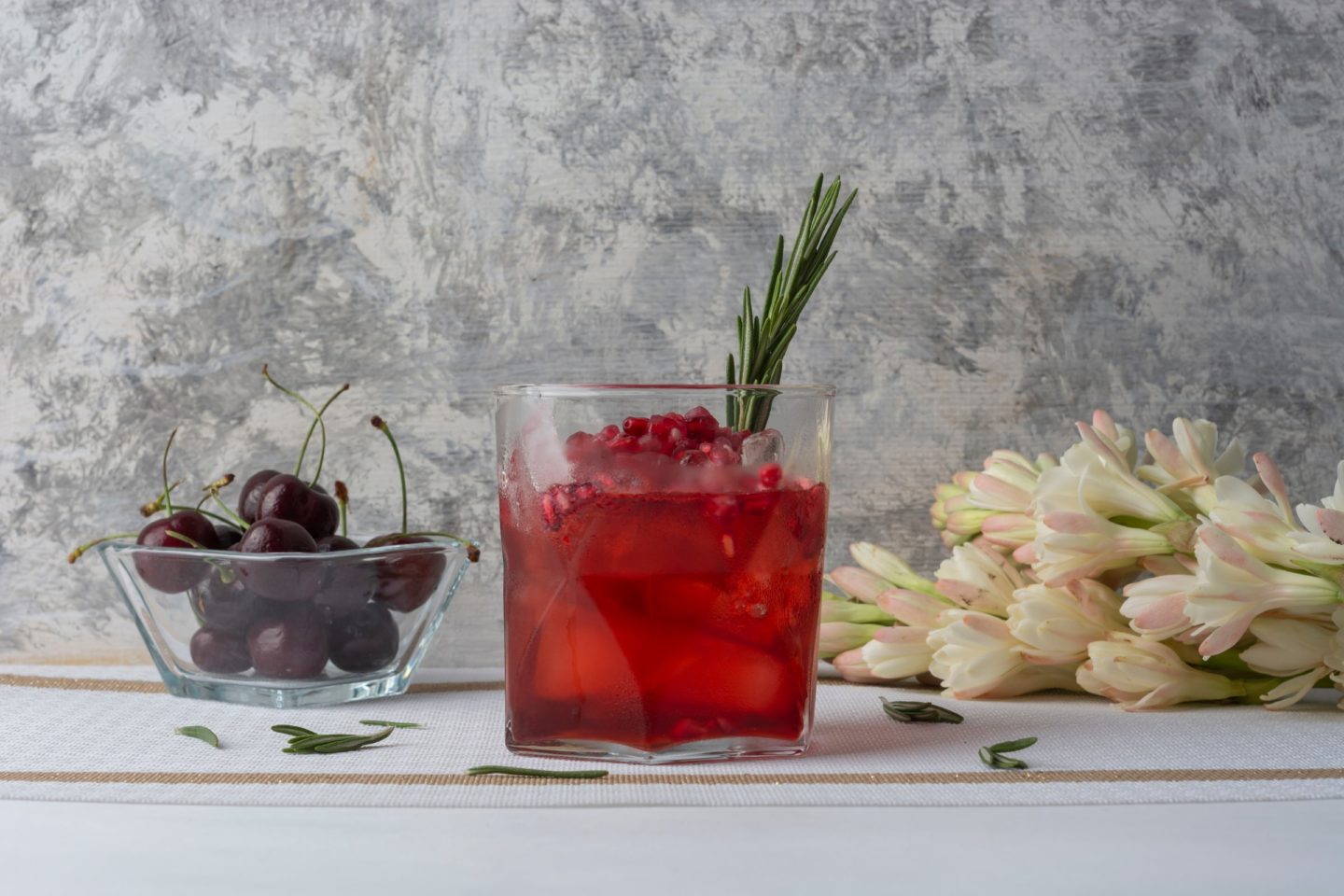
An unusual twist with a mind and body boost! Try these tart cherry superfood shots. Tart cherry juice is high in heart-healthy polyphenols and anthocyanins, which can help combat inflammation and free radical damage. Here are the ingredients:
- 2 cups tart cherry juice
- ½ cup pomegranate arils, fresh or frozen (thawed)
- ⅓ cup fresh basil leaves
- 2 tablespoons orange juice
- In a blender, combine cherry juice, pomegranate arils, basil, and orange juice. Blend on high until smooth.
- Fill a strainer with a double layer of cheesecloth and set it over a shallow bowl or large glass jar.
- Pour the juice combination into the strainer slowly and steadily, allowing the liquid to seep through the cheesecloth and into the storage container.
- Remove the particles after all of the liquid has been filtered.
- Cover and chill the shots for 15 minutes or up to a week in the refrigerator.
Source: eatingwell.com
Tart Cherry Sparkling Lemonade
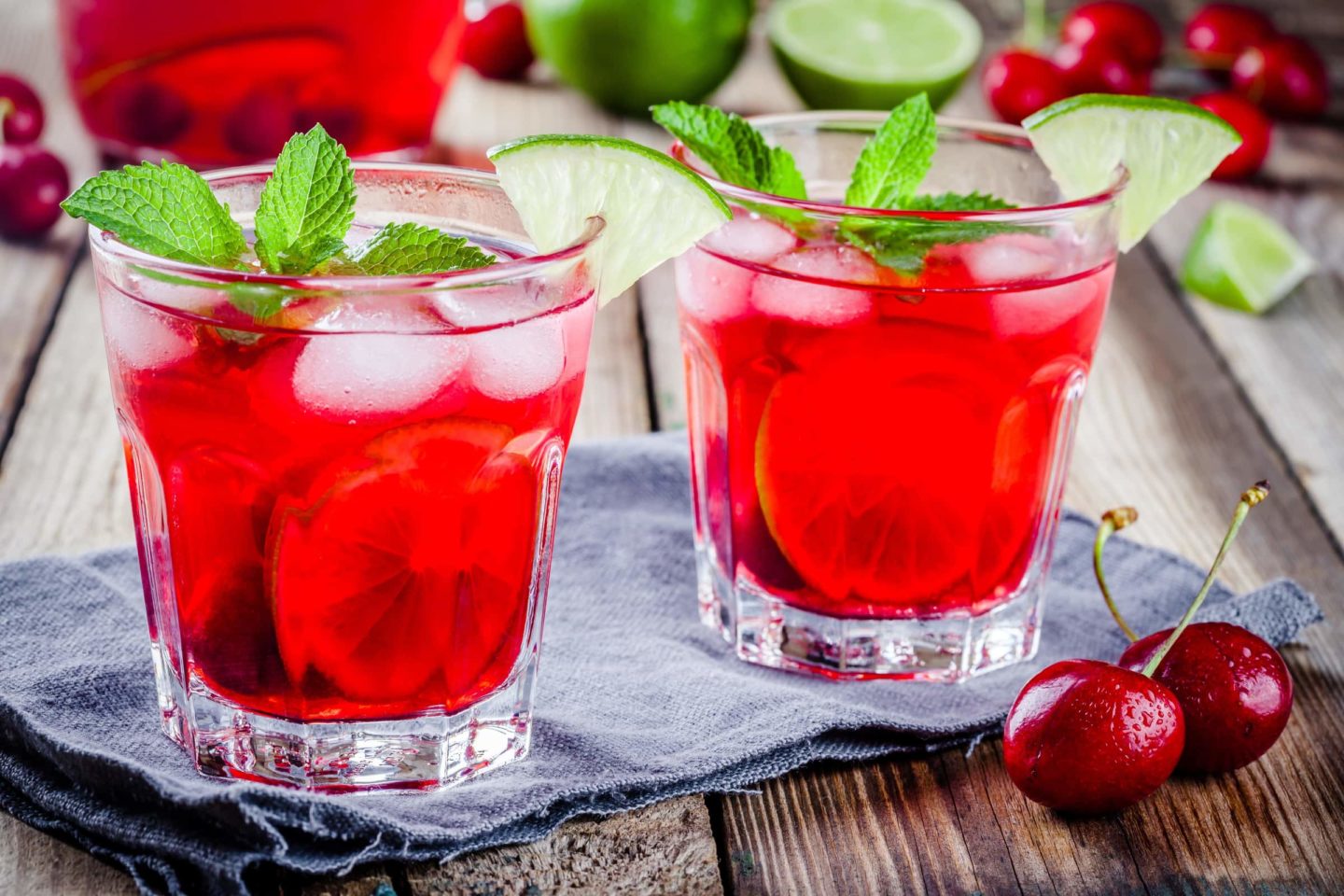
This sparkling drink will give a hint of summer in a single sip. The ingredients are:
- 1 cup Tart Cherry Juice
- ½ cup fresh lemon juice
- ½ cup lime flavored sparkling water
- 1 to 2 tablespoons agave or adjust to taste (optional)
- ice
- sugar and lime wedges to garnish
- If utilizing the optional sugar garnish, wet the rims of two glasses with a lime slice. On a plate, sprinkle sugar and dip the wet edge of the glass into it.
- In a glass or container, combine the tart cherry juice, lemon juice, sparkling lime water, and agave (if using). Mix thoroughly.
- Fill each glass with ice. Pour half of the sparkling lemonade into each glass.
- If desired, finish with a splash of sparkling water or a squeeze of fresh lime.
Source: veggieinspired.com
Tart Cherry Juice: Welcome the New Health Hero
Sour or tart cherry juice may be the hero in health you’ve been waiting for. Fully loaded with antioxidants and anti-inflammatory properties, cherry juice comes into our lives as our health savior.
Research tells us it has numerous benefits in both short- and long-term consumption. It is also sweet, palatable, and easy to prepare. We can't help but marvel at this beautiful fruit. We can't wait to make homemade tart cherry juice today!

Leave a Reply